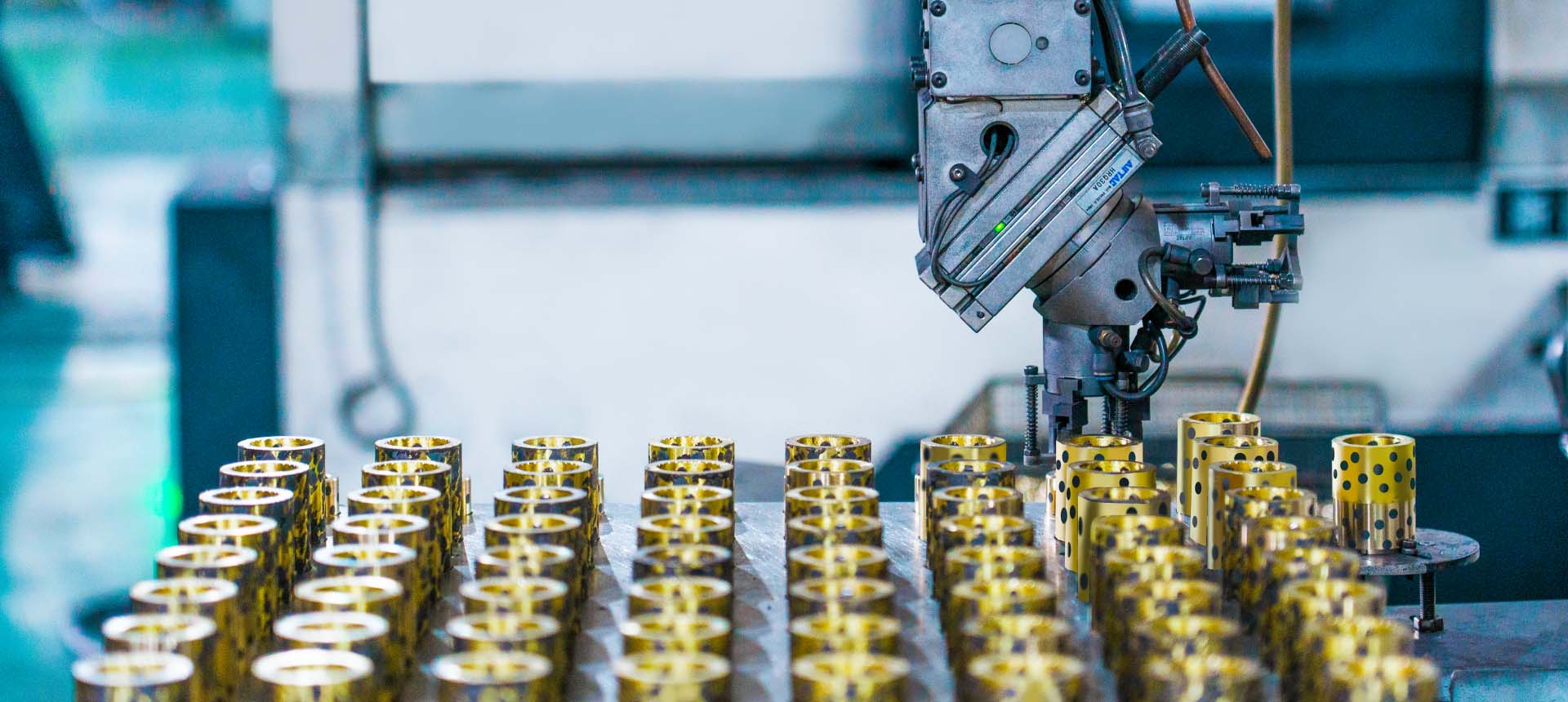Adopting advanced manufacturing processes, with wear resistance, corrosion resistance, and self-lubricating properties, effectively reduces equipment maintenance costs and extends service life.

ABOUT US
Jiabei Precision Machinery Co., Ltd.
The company was established in 2016 and is dedicated to the production of solid embedded lubricating bearings (JDB), bushings, and bimetallic bearings. The company is committed to innovation, investing in advanced equipment and technological research and development, maintaining a leading position in product performance and durability.
Explore More
Strictly adhering to the highest ISO 90001 quality management system standards to
ensure the production of high-quality products.
New & Blog
More
Conveyor systems are the backbone of modern manufacturing plants, enabling continuous material flow across production lines. From automotive assembly to food processing and packaging, conveyors operate for long hours under constant load and friction. Choosing the right bearing solution is critical to ensuring reliability, efficiency, and long service life. Among various bearing options, flanged bronze bearings stand out as a proven, high quality and cost-effective solution. Designed for durability and stability, flanged bronze bushings for conveyors are widely used as industrial conveyor bearings due to their excellent wear resistance and low-friction performance.

Agricultural equipment operates in some of the most demanding environments, from dusty fields and muddy terrain to high mechanical loads and extreme temperature changes. Components such as machinery bushings must withstand continuous operation, vibration, and shock loading while maintaining reliable performance. Selecting the right bearing technology is critical to improving durability and extending equipment lifespan. Among the most effective solutions are bimetal bearings and powder metallurgy bearings, which are widely used as bushings for agricultural machinery due to their excellent wear resistance, high load capacity, and adaptability to harsh operating conditions.

Injection molding is a cornerstone of modern manufacturing, producing complex plastic components with high precision and efficiency. The quality and durability of molds directly affect production consistency, and straight guide bushings play a critical role in this process. Combined with precision tools such as router bits, these bushings ensure accurate guidance, reduce wear, and extend mold life.

Steel mills operate under some of the harshest industrial conditions—extreme temperatures, high loads, heavy vibration, and continuous operation. Traditional lubricated bushings struggle in such environments because oiling is difficult, expensive to implement, and often fails under intense heat. This is why oilless graphite plugged bushings have become the preferred solution for steel manufacturing equipment. These bushings are engineered from cast bronze or bronze alloys, with lubricating graphite plugs inserted into precision-machined holes. This hybrid structure delivers the durability of metal combined with the friction-reducing power of solid lubricant, enabling smooth performance even under high loads and low speeds.

Marine machinery operates in some of the toughest conditions on earth—saltwater exposure, high humidity, constant vibration, and heavy loads. In such environments, traditional lubricated bearings can fail prematurely due to corrosion, lubricant washout, or accelerated wear. This is where oilless bushings become a superior choice. Engineered to provide reliable performance without continuous lubrication, these bushings offer long service life, reduced maintenance costs, and high load-bearing capability for critical marine equipment. This article explains how oilless bushings work, their materials and lubrication methods, and why they are ideal for marine applications.

As global demand for wind energy continues to grow, reliability and efficiency have become top priorities for operators of wind farms. Among the most critical components affecting turbine uptime is the bearing system. Bearings inside wind turbines face extreme operational conditions, including heavy loads, continuous vibration, temperature fluctuations, and exposure to moisture and contaminants. To ensure smooth operation and reduce maintenance costs, manufacturers are increasingly turning to self-lubricating bearings for wind turbines. These innovative solutions provide maintenance-free operation, superior wear resistance, and long service life, making them ideal for modern wind power applications.

Mining equipment operates under some of the harshest conditions in modern industry. Machines are exposed to heavy loads, abrasive materials, extreme temperatures, and continuous operation. In such demanding environments, the choice of bushing material becomes a critical factor in equipment reliability and long-term cost efficiency. Among all options, heavy-duty copper alloy bushings stand out due to their superior mechanical properties, wear resistance, and exceptional thermal and electrical conductivity. These characteristics make them essential for industrial machinery and especially for high-load, high-stress mining equipment.

Hydraulic pumps are the backbone of modern industrial and mobile hydraulic systems, from construction machinery to manufacturing equipment. High efficiency, durability, and low maintenance are essential to ensure reliable operation. In this context, DU and DX composite bushings have emerged as a leading energy-efficient bearing technology, offering superior wear resistance and performance under demanding conditions.

In today’s manufacturing and heavy engineering sectors, high-load industrial machinery such as presses, injection molding machines, and cranes operate continuously under extreme conditions. These machines demand components that can handle intense pressure, heat, and wear without frequent maintenance. That’s where oilless graphite bronze bushings come in — a proven solution for long-lasting performance and maintenance-free operation.